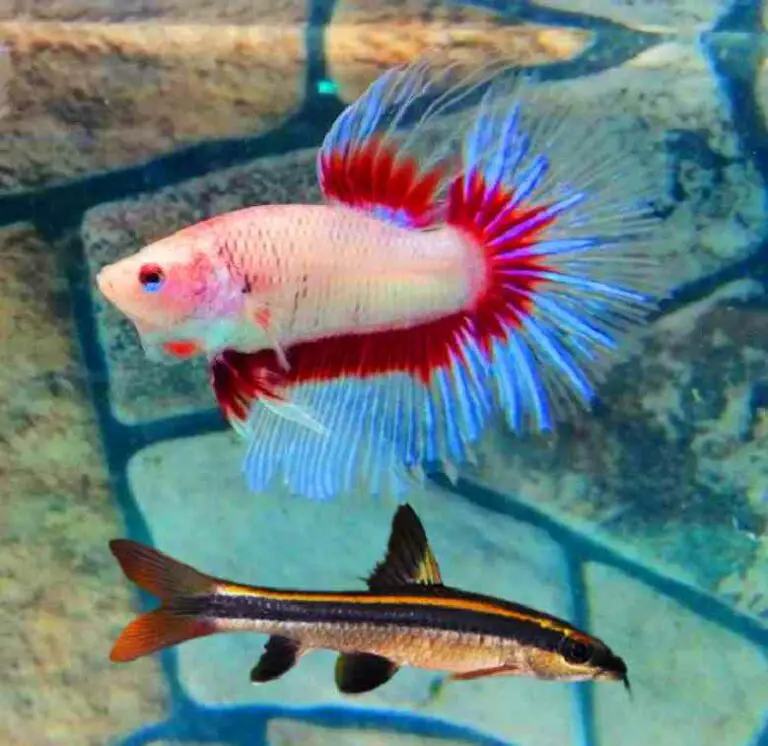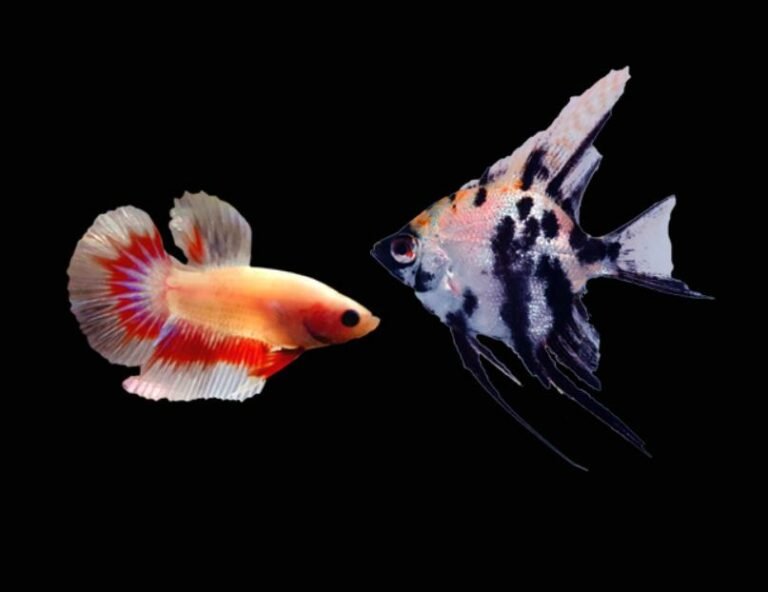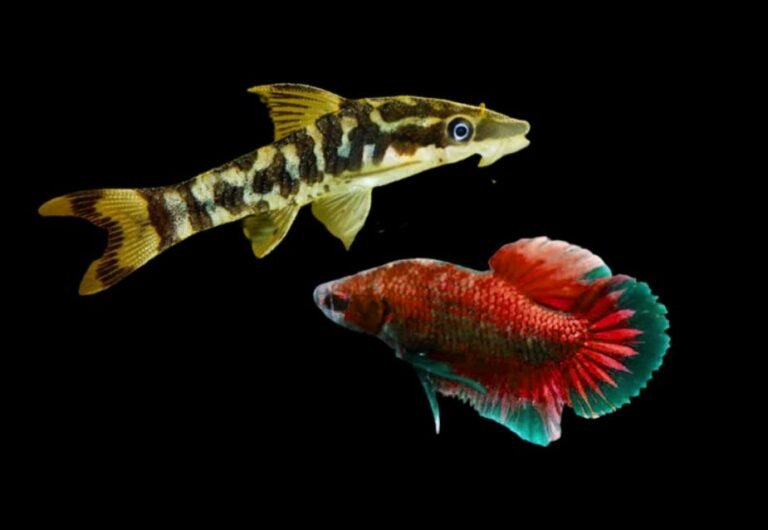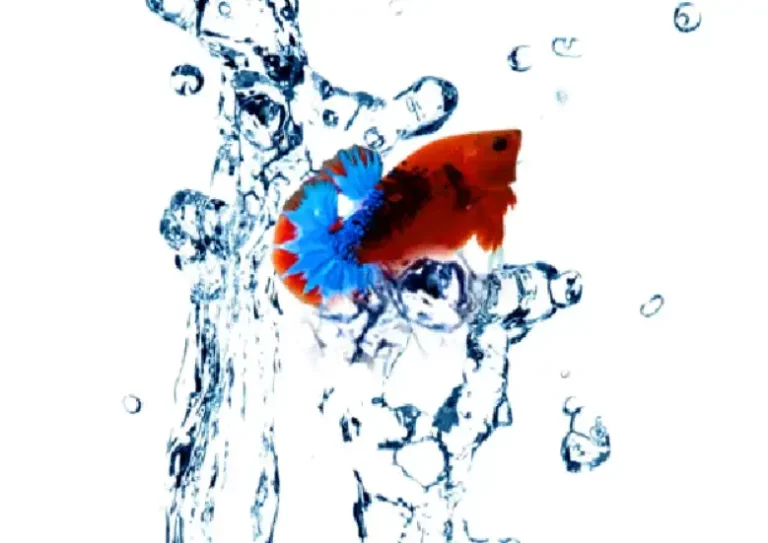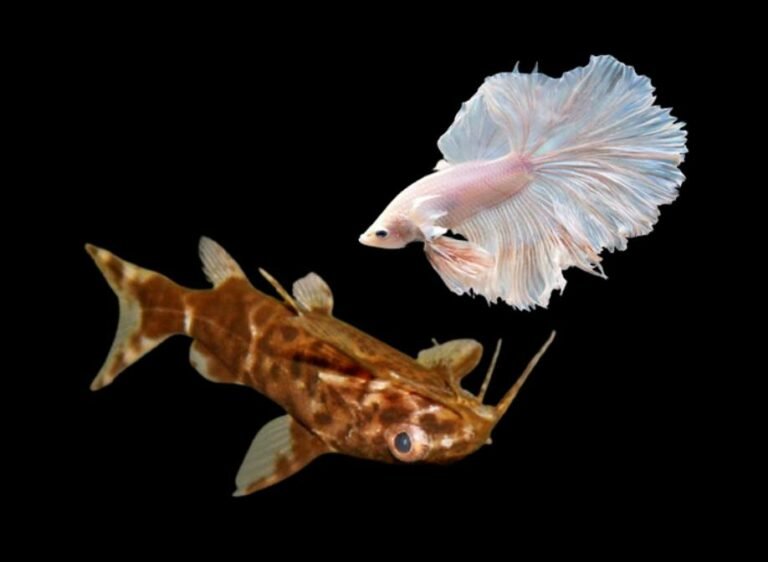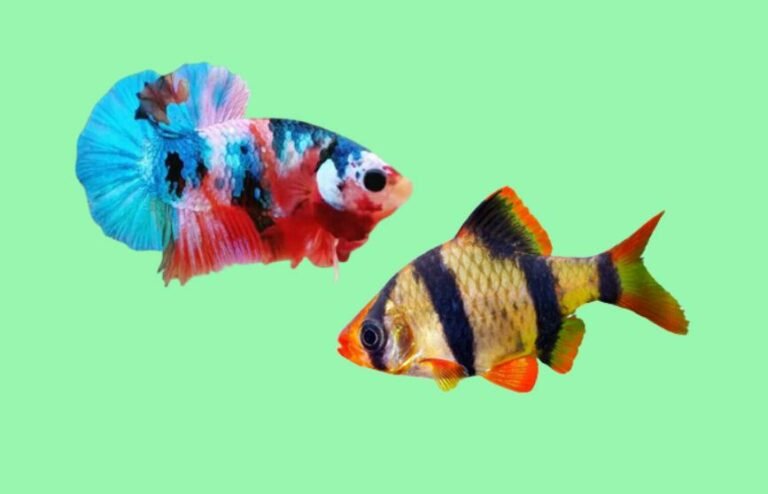10 Reasons Your Betta Fish May Be Lying On Its Side
As a betta fish owner, finding your fish lying on its side at the bottom of the tank can be concerning. Side-lying alone may not signal an emergency. Check for other signs of distress, improve suboptimal tank conditions, and allow extra rest.
However, there are a few possible explanations for this behavior that are good to be aware of.
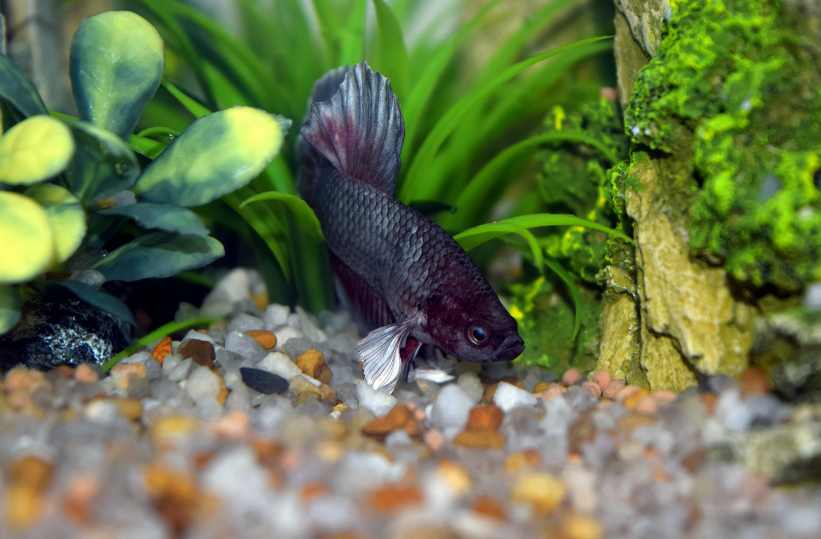
Table of Contents
- Betta is Sleeping
- Betta Stressed
- Low Temps Can Cause Betta Lethargy
- An Aging Betta May Rest More
- Constipation Causing Betta to Lay on Its Side – Try These Remedies
- Swim Bladder Disorder – A Common Cause of Betta Side-Lying
- Ammonia Be Making Your Betta Sick
- Nitrate Spikes Making Bettas Sick
- Parasites Be Affecting Your Betta
- Strong Filter Flow Be Exhausting Your Betta
- What to do if you notice your betta lying on its side?
- Summary
Betta is Sleeping
Sometimes betta fish rest or sleep on its side at the bottom or top of the tank. While this sideways floating may look concerning, it often simply means your betta is taking a nap. Bettas are highly intelligent for fish and frequently exhibit sleeping behaviors more similar to humans than typical fish. Rather than remaining upright while idle, bettas will fully relax and lie down to sleep.
They may prop themselves on leaves, decorations, or other surfaces while sleeping on their sides.
This eccentric sleeping posture is entirely normal and healthy for bettas. They can sleep soundly in this position for several hours before stirring again. Sometimes, they float back up slowly after a nap instead of immediately darting off.
Before worrying about your side-sleeping betta, look for other signs of distress like “clamped fins, ragged breathing, or loss of appetite”. If your betta seems healthy overall, it is likely just getting some well-deserved rest. These clever fish need their beauty sleep too.
So next time you spot your betta sleeping on its side, there is no need to panic. A sleeping betta means a happy, healthy betta.
Betta Stressed
While betta fish resting on their sides is often expected, it could alternatively be a sign of stress. Bettas are prone to stress from environmental factors, which can lead to concerning health issues.
Some everyday stressors to check for include,
- Insufficient space – Bettas need at least 5 gallons with hiding spots and open areas. Upgrade tank size if required.
- Water changes – Frequent 100% changes cause stress. Aim for 20%-30% weekly changes to avoid temperature and chemistry shocks.
- Tankmates – Bettas prefer living alone. Remove aggressive fish or those nipping fins.
- Water parameters – Ensure water stays in the ideal ranges for temperature (78°F), pH (6.5-7.5), and ammonia (<0.5 ppm).
- Decor – Too bare or too crowded tanks are stressful. Add soft plants and hides while allowing swimming room.
Stress can suppress the immune system and cause susceptibility to diseases like “fin rot, velvet, ich, and popeye”. Watch for clamped fins, color loss, labored breathing, and lack of eating.
Try to identify and fix any stressors in the tank. Consider adding Indian almond leaves or decaffeinated betta tea to soothe your fish. With some adjustments to its environment and care regimen, your betta should perk back up soon. Monitor closely and consult an exotic vet if signs persist. A healthy, enriched habitat will lead to a happier, more active betta.
Low Temps Can Cause Betta Lethargy
While bettas tolerate a wide temperature range, exposure to colder water can cause issues like lethargic side-lying. Bettas prefer a cozily warm habitat.
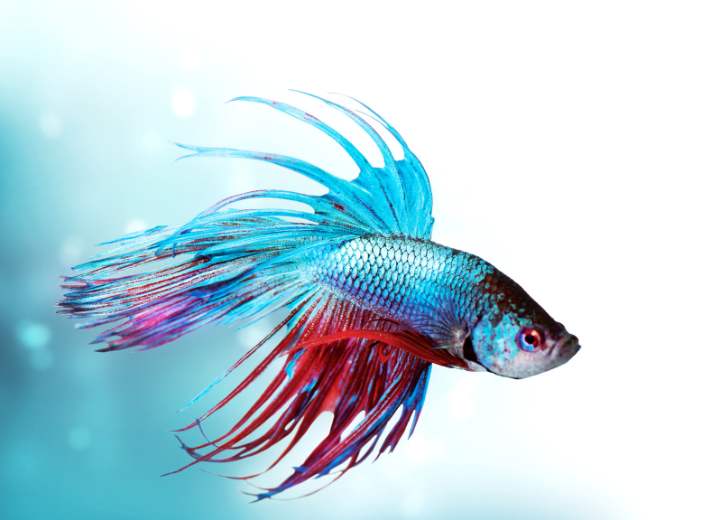
If your tank recently dropped below 76°F, the chillier water is likely the culprit for your betta’s sluggish behavior. Lower temperatures cause their metabolism to slow significantly, reducing activity levels.
Prolonged cold stress also hampers digestion and immunity. Lethargy allows waste to build up and diseases to take hold. It can spiral into a serious health emergency for cold-blooded bettas.
Restore proper tank warmth as soon as possible. Get a submersible heater suitable for 5+ gallons. Adjust to maintain 78-82°F, mimicking bettas’ native tropics steadily.
Your betta will perk up and show lively energy at ideal temperatures again. Their health and vibrancy improve dramatically when given proper heat.
Routine water testing ensures temperatures stay in that healthy 78-82°F zone. Make thermometer checks part of your weekly maintenance to avoid cold snaps and lethargic bettas in the future. With the proper aquatic climate, your fish will thrive energetically.
An Aging Betta May Rest More
As bettas grow older, it’s common to see them lying on their sides or bottom of the tank more frequently. If betta is around 3-5 years old, its increased resting behavior is likely a natural result of old age and declining energy levels.
While concerning at first glance, this lethargic behavior is typical for elderly bettas. Their aging bodies tire more quickly and need extra rest. Older bettas may take prolonged naps and pause swimming to conserve their strength.
To help your senior betta,
- Provide ample soft floating plants or leaves for resting spots near the surface. This allows them to sleep and warm up quickly.
- Consider shorter tank lengths so they don’t have to work hard traversing long distances.
- Feed a high-quality diet to maintain health and some activity.
- Check water parameters to ensure ideal conditions.
Adjustments allow an older betta to live happily despite needing additional rest. Monitor for signs of distress and consult a vet if you have concerns. Otherwise, be patient with your pet’s slower pace and let it enjoy cozy napping spots. With good care, your betta can live out its senior years contentedly.
Constipation Causing Betta to Lay on Its Side – Try These Remedies
Constipation may be the culprit if your betta appears bloated or swollen and lying on its side. The inability to pass waste can make bettas listless and float atypically.
Cold water is a common cause of constipation by slowing digestion and bowel movements. Try raising temperatures to 78-80°F to support healthy gut function if needed.
Treat mild constipation by fasting your betta for 2-3 days, then refeeding small amounts of daphnia or blanched, skinned peas. Their fiber helps clear blockages gently.
Avoid overfeeding, which can also lead to constipation issues over time. Stick to 3-4 tiny daily meals of quality betta pellets or flakes.
Monitor bloating and activity levels. The issue may be serious if your betta struggles to recover average buoyancy and movement. Consult an exotic veterinarian, as medications or laxatives may be needed.
Catching constipation early and making diet/temperature adjustments can help resolve it quickly. A healthy, active betta usually passes waste and does not need to lay sideways. With proper care, your fish can stay swim-ready in no time!
Swim Bladder Disorder – A Common Cause of Betta Side-Lying
Swimming bladder disorder is one of the most frequent illnesses that can cause bettas to struggle to float upright and lay sideways. The swim bladder is a gas-filled organ controlling buoyancy. When infected or obstructed, proper swimming becomes difficult.
Swim bladder disease has several potential sources.
- Overfeeding leads to constipation and pressure on the bladder
- Bacteria or parasites infecting the bladder
- Sudden temperature changes shock the system
- Physical injury damaging the bladder
Symptoms include “floating sideways, sinking, tail-standing, and difficulty rising to the surface”. It affects up to 20% of captive bettas.
Treat mild swim bladder disease by fasting for 2-3 days, then feeding daphnia or peas. Adding Epsom salt at 1 tsp/gal can reduce swelling and stimulate healing. Keep water extra clean.
For severe infections, medications may be prescribed by a vet. Antibiotics treat bacterial cases, while anti-parasitics tackle common culprits like flukes.
With prompt treatment, most bettas fully recover within 1-2 weeks. Prevent recurrence by avoiding overfeeding and maintaining stable water conditions. If caught early, swim bladder disorder is very treatable.
Ammonia Be Making Your Betta Sick
High ammonia levels can also lead to lethargic bettas that struggle to stay upright. Ammonia is a highly toxic byproduct of fish waste and decaying matter in the tank. Exposure causes severe stress and poisoning.
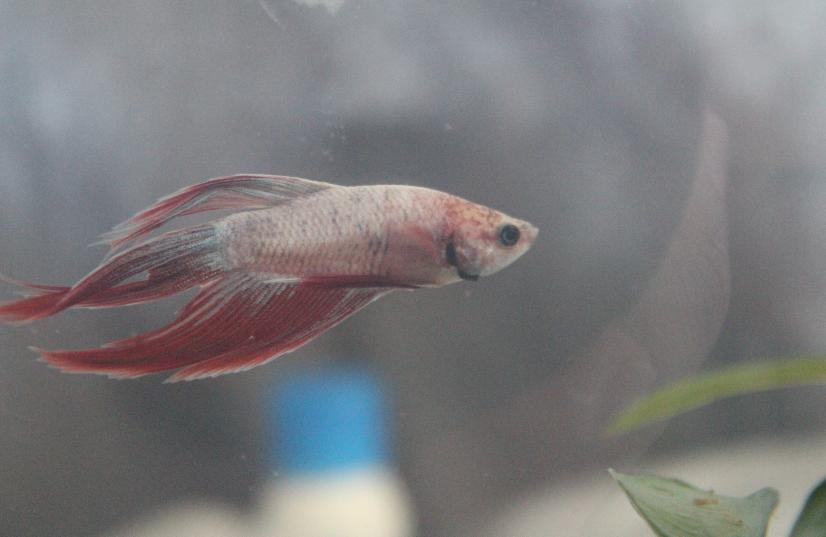
If you notice your betta lying on its side and gaping at the surface, immediately test the water’s ammonia reading. Ideal levels are 0-0.5 ppm. Any higher requires urgent action.
Perform a 25% water change to dilute the ammonia. Use a gravel vacuum to remove waste and top off with dechlorinated, temperature-matched water.
Consider adding an Ammo Lock to detoxify the remaining ammonia. Repeat partial water changes over several days until ammonia falls below 0.5 ppm.
Double-check your tank maintenance routine. Are water changes frequent enough? Is the filter working properly? Reducing waste and decay is critical to preventing ammonia spikes.
With the swift reduction of ammonia and clean, healthy water conditions, your betta should regain strength and balance. Prevent poisonings in the future through weekly partial water changes and testing. Give your fish the fresh, safe home it deserves.
Along with ammonia, elevated nitrate is another invisible toxin that can harm betta health.
Nitrate Spikes Making Bettas Sick
Nitrates come from the breakdown of fish waste and excess food. Levels above 20 ppm can be pretty dangerous.
Test the water for nitrates if your betta is lethargic and pale with heavy breathing. Anything above 20 ppm requires a partial water change. Replace 25%-30% with dechlorinated, temperature-matched water.
Continue testing and changing water over several days until the nitrate reading drops below 20 ppm. Clean the gravel to eliminate trapped waste.
Prevent nitrate spikes by performing partial weekly water changes of 20% – 30% of the total volume. This flushes out nitrates before they build up.
Reduce feeding amounts if water quality declines rapidly between changes. Excess food increases waste and drives up nitrates.
Your betta should regain its standard color and energy with lower nitrate levels and clean water. Stay vigilant in monitoring water quality to detect issues early. Keep your fish safe and healthy!
Parasites Be Affecting Your Betta
While rare, some betta illnesses like velvet disease or flukes can cause lethargy and trouble swimming upright. These parasites attach themselves to bettas’ skin and gills, damaging tissue and causing distress.
In addition to side-lying, look for these possible signs,
- Clamped fins
- Flashy, scratching behavior
- Gold velvet “dust” on skin or fins
- White stringy feces
If parasites are suspected, take a skin/gill sample to an exotic vet for identification. Different anti-parasitic medications will be prescribed accordingly.
For velvet, treat with copper-based medications. For flukes, PraziPro is often effective. Remove carbon filters during treatment.
Be sure to quarantine the infected betta during medication in a separate, bare hospital tank. Disinfect the main tank before returning the now-parasite-free fish.
With proper identification and treatment, parasitic infections can be eliminated. Quarantine new fish and use preventative measures like salt baths. Give your betta the healthy, pest-free home it deserves!
Strong Filter Flow Be Exhausting Your Betta
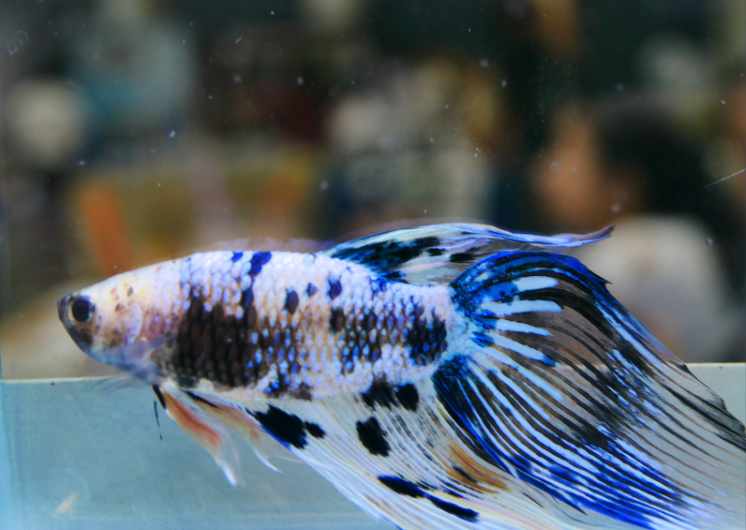
Betta likes to live in a calm and slow water waves currents. Sometimes filters and bubblers produce currents too turbulent for their long fins. The constant need to fight strong flows can fatigue and stress them.
Check the filter flow speed if your betta seems to be lying on its side frequently. Bettas prefer minimal surface disruption and gentle currents.
Try baffling the output to dissipate the strength. Position or angle it to prevent directly blowing on your betta’s usual spots.
Turn down adjustable pumps to their lowest setting. Or try a sponge filter instead, which offers gentle, even circulation.
Also, provide plenty of dense plants and decor for resting spots out of the main flow. Floating plants are great for calmer surface areas.
With reduced water turbulence and places to take refuge, your betta won’t have to battle currents non-stop. Its energy and activity should rebound after some peaceful rest. A serene, betta-friendly flow allows it to thrive!
What to do if you notice your betta lying on its side?
Act Quickly if Your Betta is Side-Lying, and follow the below steps.
- Inspect closely for other symptoms – lethargy, clamped fins, bloating, rapid breathing, spots, and ragged fins. These signal an underlying issue.
- Test water parameters – temperature, pH, ammonia, nitrites, nitrates. Make any needed adjustments.
- Perform a partial water change and gravel vacuum to remove waste and refresh the habitat.
- Check for potential stressors like tank size, strong currents, and aggressive tankmates. Make the environment more comfortable.
- Look into swim bladder disorders, infections, parasites, injuries, and old age as potential causes if symptoms persist.
- Fast the betta for 2-3 days, then feed daphnia/peas if constipation or bloating.
- Treat any illness appropriately – antibiotics, anti-parasitics, aquarium salt, medication baths.
- Provide resting places near the surface like leaves, hammocks, and floating logs.
- Consult an exotic vet if the betta does not improve with home treatment.
With quick intervention, diagnosis, and care, most bettas rebound after side-lying episodes. Stay vigilant for symptoms, and don’t hesitate to take action for your fish’s health.
Summary
A betta resting on its side now and then is not necessarily cause for alarm. These intelligent fish do like sleeping in odd positions! However, frequent or prolonged episodes of side-lying warrant a closer look.
Test water parameters, inspect your betta, and change its environment. Catch issues early before they escalate. Side-lying coupled with lethargy, bloating, or other symptoms often indicates an underlying health problem.
Common culprits are swim bladder disorders, constipation, infections, parasites, old age, and water quality. With proper diagnosis and care, most bettas bounce back quickly. Be vigilant about your pet’s needs.
While a betta on its side can be disconcerting, it is often manageable with attentive caregiving. Know the signs of illness and react promptly. Give your betta the clean, cozy home it deserves to live an active, energetic life. With proper maintenance and treatment, your fishy friend will swim upright quickly.

